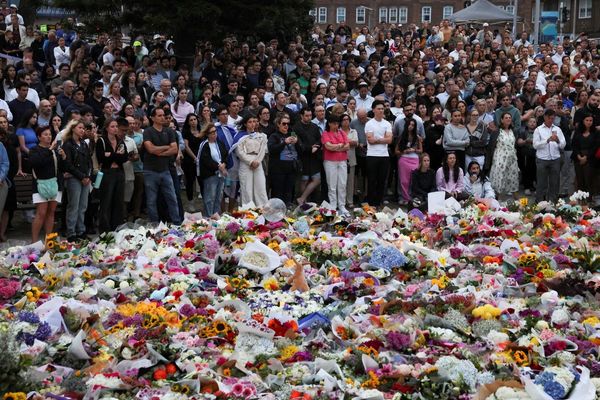THE public are being invited to take a tour of Scotland in the mid-19th century through the online records of National Records of Scotland.
When the Ordnance Survey created its first six-inch to the mile maps, its surveyors travelled the country to collect place-names and their spellings. They would use existing publications and local people as sources.
It took them almost 40 years to gather all the information.
The result was arguably the first comprehensive gazetteer of Scotland. The Ordnance Survey name books detail just about every geographical feature from Out Stack, the most northly part of Shetland, to the Mull of Galloway, the most southerly part of Scotland.
The books offer a snapshot in time, capturing the country as it was in Victorian times. The Wallace Monument in Stirling was only at its foundation course at the time of being surveyed in 1861-1862.
A range of entries for different locations around Scotland:
-
Standing Stones of Stenness (OS1/23/21/6) – Orkney. Surveyor cites local people and two books about Orkney as sources. “It can only be supposed as probable that religious zeal impelled the half savage islanders to unite their strength in raising these huge masses of stones as enclosed places of sacrifice, but at best this is only a surmise.”
-
Borg Pict’s Tower (OS1/33/20/239) – Reay, Sutherland. Described as a large circular structure likely built by Picts; includes a sketch showing the scale of the massive stones. It begins: "This name applies to the remains of an ancient building which very probably - belonged to the Picts, from the construction of the building. It is of a circular shape and measures about 70 feet in diameter. It is composed of very large stones so large indeed that it would be thought impossible for any number of men to raise them to such a height without the aid of machinery."
-
Bronze Spearhead (OS1/7/12/164) – Watten, Caithness. Entry includes a sketch of a bronze spearhead said to be found at this site.
-
Ardross Castle (OS1/28/2/8) – Ross-shire. In recent years this building has became famous as the location of The Traitors TV reality game show. The entry describes it as "an elegant modern building".
-
Castle Street (OS1/17/33/125) – Inverness. Formerly known as "Doomesdale Street" due to it being the route to the gallows.
-
Sculptured Stone (OS1/1/10/42) – Bourtie Parish. Entry includes a sketch of a Pictish symbol stone repurposed into part of a church wall. Entry reads: "In the south wall of the church near the roof on the east side, there is built a curiously carved stone, it is about 30 inches long by about 12 broad. It was discovered in its present position about 10 years ago by a man who was employed in the grave yard lettering tombstones."
-
Sculptured stones (OS1/1/70/25) – Carden, Logie Elphinstone. Entry includes a sketch: "These stones, three in number, are now built into the wall on the east side of the turnpike road where the north approach to the house of Logie Elphinstone leaves it; two on the South and one on the west side of the lodge. They were found on the moor of Carden and placed where they now are, but Sir J.D.H. Elphinstone thinks of removing to some place nearer his residence. The sculpturing on two of them is pretty perfect, the third is a little defaced."
-
Maiden Stone (OS1/1/13/58) – Chapel of Garioch. Entry includes a sketch of a Pictish stone cross slab with two possible local legends mentioned about its past neither of which was a happy tale for the eponymous Maiden.
-
Dunnottar Castle (OS1/19/6/51) – Aberdeenshire. Contains a long descriptive entry from the Statistical Account highlighting the castle's significance.
-
Balmoral Castle (OS1/1/19/118) – Braemar and Crathie. The entry is long and concludes: "“Property of Queen Victoria”.
-
Glenfinnan Monument (OS1/17/9/99) Entry describes the monument to Prince Charles Edward Stuart at the site where he is said to have first raised his colours on arrival in Scotland in pursuit of the throne. It quotes the metal plaque: "On this spot where Prince Charles Edward Stuart first raised his standard On XIX day of August MDCCXLV. When he made the daring and romantic attempt to recover a throne lost by the imprudence of his ancestors."
-
Wallace Monument (OS1/8/6/27) – Stirling. Describes early stages of construction in 1861, highlighting its national importance and intended 220ft height. Entry reads: "The proposal for rearing on the Abbey Craig a monument in honour of National Patriot, Sir William Wallace, was inaugurated at a great national meeting, held in the Kings Park, Stirling, on the 24th June, 1856. The first stone was laid on the 24th June, 1861. The monument is to be erected solely by public subscription. As yet only the foundation course is laid. It is to be two hundred and twenty feet in height, and will combine strength with elegance of design."
-
Dragon’s Hole (OS1/25/41/19) – Kinnoull Hill, Perth. Entry in full: "A Hole or Cave in the Rocks in the face of Kinnoull Hill, Supposed by some Antiquarians to be designated so on account of its being the residence of a dragon or large Serpent. The entrance to the cave can be seen from the Dundee Road at Lairwell. It is difficult of access, and appears to have been no larger than it is at present, it will contain about 12 persons. This cave has been known by its present name as early as the sixth Century. Prior to the year 1580 this cave was greatly resorted to in the month of May by the young men and women of Perth. On the 2nd May 1580, the Kirk Session of Perth passed an Act prohibiting all persons proceeding to the Dragon Hole superstitiously under a penalty of twenty shillings to the poor to be paid by every person found guilty. Also, that they shall make their public repentance upon a Sabbath-day in the presence of the people."
-
Edinburgh Castle (OS1/11/105/6) Long entry covering the site's history and the etymology of "Edinburgh"; other related pages available.
-
Kelvingrove House (OS1/21/29/46) – Glasgow. Referred to as “a fine old mansion of about 120 years.”
-
Gretna Green (OS1/10/22/37) – Dumfries and Galloway. Famous for runaway marriages, the entry notes the decline of these after legal changes in 1837.
-
Lamberton Toll Barr (OS1/5/34/26) – Near Berwick. Known as the "Gretna Green of the East,” with up to 300 marriages performed annually at this border tollhouse. The entry describes a rectangular building two storeys high, in good repair, with an outhouse attached; it is situated about 3 1/2 miles from Berwick on the high road to [Eyemouth?] and is the property of the trustees. This building is on the boundary of England and Scotland and is notorious for being the Gretna Green of the East as 300 marriages take place here [annually?].
The books date from between 1845 and 1880. They contain around 300,000 place entries and include everything from famous castles to small local landmarks.
The Ordnance Survey name books were also the first systematic attempt at recording Gaelic place-names.
Archivist Jessica Evershed said: “The Ordnance Survey used the name books to inform the spelling of places on their first edition six-inch maps of Scotland. They could be considered the first comprehensive gazetteer of places in Scotland.
“These records will be fascinating to local and family historians, hoping to understand the evolution of the Scottish landscape and of the places their ancestors worked and lived. They can offer explanations of the origins of place-names from local people, including stories of how place-names came about. Sadly, some of these stories are now forgotten with the passage of time.
“You can search for a favourite historic building or landmark and compare the historical entry with how it looks today.”
Click here to see more records on the Scotland's People website.







